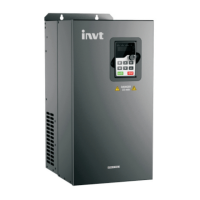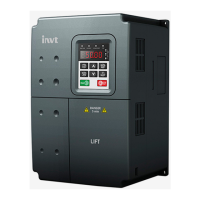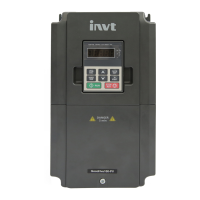0: Straight line V/F curve; apply to the constant
torque load
1: Multi-dots V/F curve
2: Torque-stepdown V/F curve (1.3 order)
3: Torque-stepdown V/F curve (1.7 order)
4: Torque-stepdown V/F curve (2.0 order)
Curves 2~4 apply to the torque loads such as fans
and water pumps. Users can adjust according to the
features of the loads to achieve a best
energy-consuming effect.
5: Customized V/F(V/F separation); on this mode, V
and F can be separated and the feature of the curve
will be changed either by adjusting F through the
frequency reference channel set by P00.06 or by
adjusting V through the voltage reference channel
set by P04.27.
Note: V
b
in the below picture is the motor rated
voltage and f
b
is the motor rated frequency.
To compensate the feature of low-frequency torque,
carry out torque boost on the output voltage. P04.01
is for the maximum output voltage V
b
.
P04.02 defines the percentage of closing frequency
of manual torque to f
b
. Torque boost can improve the
feature of low-frequency torque of SVPWM control.
Torque boost should be selected according to the
load. The bigger the load is, the bigger the boost is.
Too big torque boost is inappropriate because the
motor will run with over-excitation, and the current of
the inverter will increase to raise the temperature of
the inverter and decrease the efficiency.
When the torque boost is set to 0.0%, the inverter is
automatic torque boost.
Torque boost threshold: under the threshold, the
torque boost is valid, but over the threshold, the

